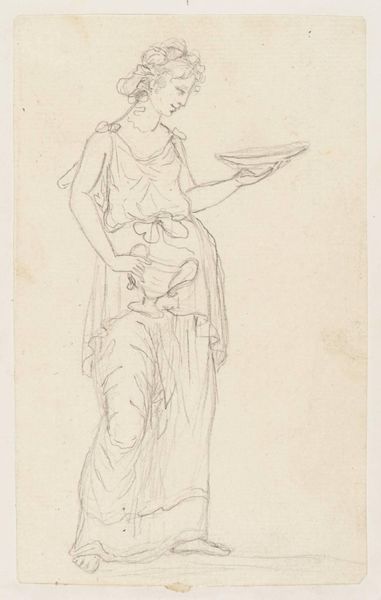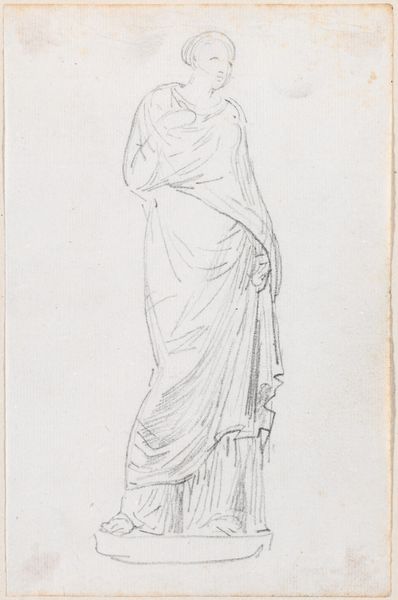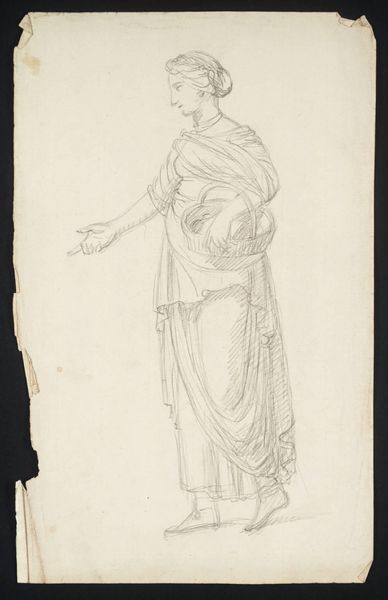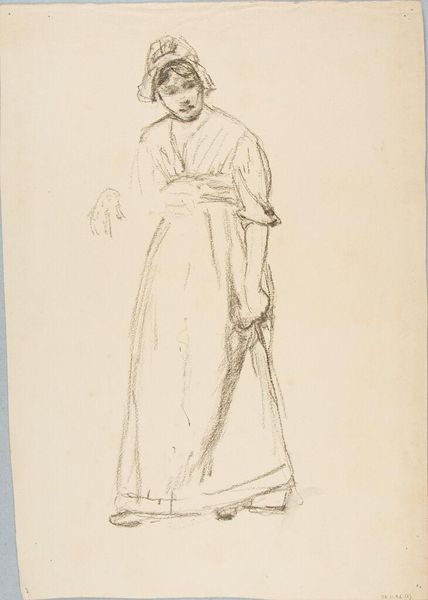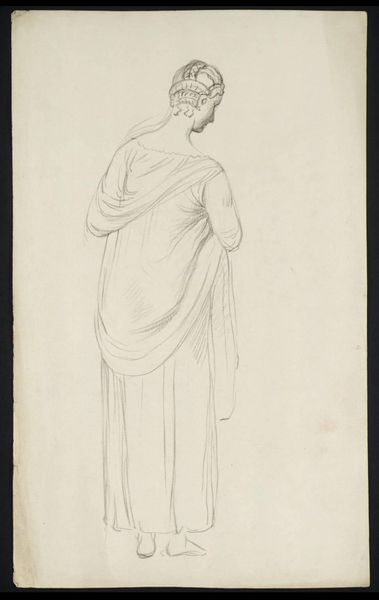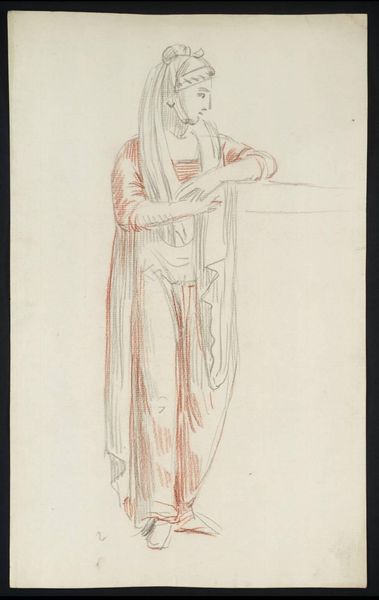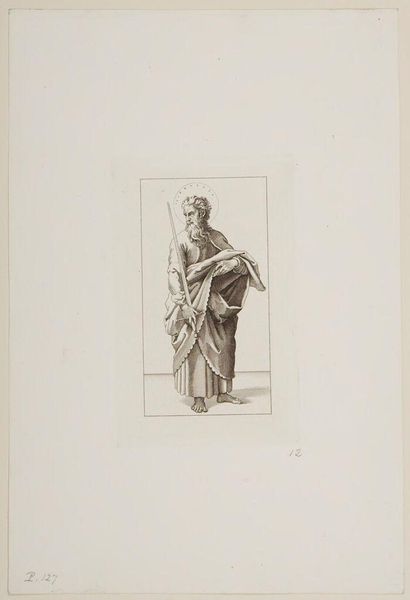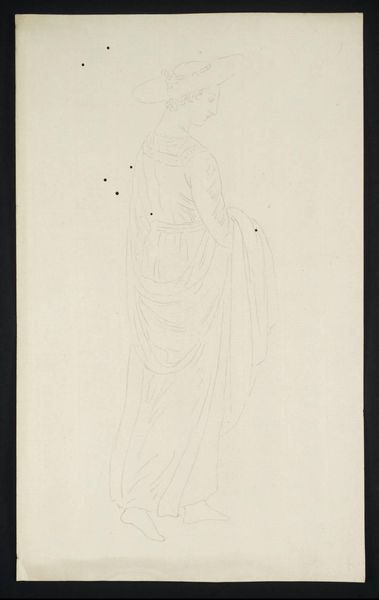
drawing, pencil
#
portrait
#
drawing
#
neoclacissism
#
classical-realism
#
figuration
#
form
#
male-portraits
#
classicism
#
pencil
#
line
#
history-painting
#
academic-art
Copyright: Public domain
Curator: Immediately, the word that springs to mind is "austere." This pencil drawing… feels almost archaeological. The man swathed in antique garb, next to that… seat… Editor: This is a study attributed to Pierre-Narcisse Guerin. While the exact date is unknown, it’s clear it belongs to the Neoclassical movement, so we can situate it loosely around the late 18th, early 19th century. Notice the gridlines? Curator: Ah, yes! It’s peeking through from underneath the figure. Are we seeing a very deliberate process laid bare here? A meticulous method to the madness, perhaps? Editor: Precisely. It points to the artist's planning stages for a larger composition, maybe a history painting. Neoclassicism really valued order, clarity, and those preparatory studies are goldmines. Curator: It’s so fascinating, this blend of raw artistic process combined with such…posed… dignity. The draping alone could keep you mesmerized for an hour. And the hand gesture... it almost feels declamatory. What is he saying, I wonder? Is he pointing towards the future, the past, or is this gesture merely about occupying space? Editor: The gesture resonates across eras – think of orators, heroes, and leaders using similar hand signals to convey a message. It definitely brings a sense of authority and purpose. Guerin and his contemporaries were all about invoking the spirit of the ancients to shape contemporary moral discourse. Curator: I almost feel as though I’m eavesdropping on the artist's intimate moment, this dance between intellect and intuition. Do you feel that too? It's like stumbling upon a secret ritual that has a connection to an historical past. It leaves you questioning what he has achieved. Is the real piece out there? What was its final context? Editor: A fair point. The classical world was incredibly potent as a kind of theatre. What feelings do we want to stir up? The grid is now beginning to symbolize control. The antique world meets contemporary ideals; a symbol for the continuity of aesthetic ideals perhaps? A real web for a wandering imagination. Curator: Absolutely! Editor: Thank you, a thought-provoking discussion. Curator: My pleasure!
Comments
No comments
Be the first to comment and join the conversation on the ultimate creative platform.
